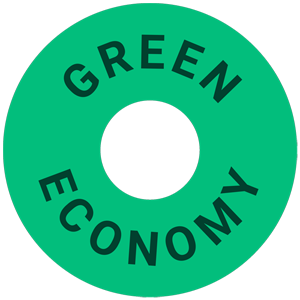7 steps to reduce your website’s emissions
A variety of tricks and techniques can be used to build clean, low energy websites with clear and efficient messaging. Creating low-emission websites doesn’t mean sacrificing SEO targets, removing important content or cheapening your brand, it means implementing conscientious and well-thought design. In general, decreasing what is known as “page-weight” will reduce the amount of energy your website needs to function and be accessed by consumers, meaning less emissions produced.
1. Sustainable coding
Building your website with an original theme, as opposed to a pre-determined template, will ensure less data consumption and a cleaner website.
Sustainable coding is code and computer algorithms designed efficiently to consume minimal energy. Intelligent web-coding also has performance benefits including faster loading times, easier maintenance and better communication with search engines; a big win for SEO targets.
A good place to start is using less JavaScript code; a scripting programme language used to implement complex web features. JavaScript is less sustainable than other coding methods since the script is processed on a user’s device, meaning more energy is consumed to access the webpage. In general, tracking and advertising scripts seldom have real value but add substantial file weight, meaning slower webpages and higher levels of energy use.
Cascading Style Sheets (CSS) is a more efficient technology than the likes of JavaScript, creating shorter load times and low-energy websites.
2. Switch to a green web host
A green web host (GWH) is a hosting company whose operations are powered by renewable energy, or one who produces more energy than it uses. In essence, a GWH will be using clean energy sources to run their business and host webpages for their customers. They don’t necessarily have to produce their own energy to qualify as a GWH, but they do need to prove that their energy source is renewable.
3. Reduce the size of your videos
Video content takes the majority share of internet traffic today, with 80 per cent of annual internet traffic stemming from video dataflows. By decreasing the size of your online video content, you can reduce the amount of energy required to operate your website and the greenhouse-gas (GHG) emissions associated with it.
Did you know: Watching over a billion hours on YouTube has generated roughly 11.13 million tonnes of CO2 over a year.
4. Remove unnecessary images
Images contribute significantly to a website’s “page-weight.” Using a large quantity of high-resolution images on your site will mean more energy is needed to load each page. Instead of using JPEG, PNG and GIF image formats, switching to SVG graphics and compressing images will reduce their carbon footprint.
5. Use system fonts
Using system fonts rather than custom fonts is a good tactic for cutting web emissions. A system font is one which is already assumed to be on most devices, meaning it’s highly unlikely that the font will need to be downloaded. System fonts decrease the amount of HTTP requests you make and reduce page-weight.
Colours also have an impact on your websites carbon footprint. Brighter colours require more energy to load, so using darker themes is an incredibly simple and effective means of reducing your website’s energy consumption.
6. Boost your search engine optimisation
By focusing on search engine optimisation (SEO) targets you can reduce the number of webpages your users navigate through to find your page. Each page visit is energy used and carbon produced, so making your webpage more readily available through SEO practices will reduce a user’s carbon footprint while they search for your page.
7. Think about your email content
Every email sent from your organisation carries a carbon footprint, and estimates have shown that emails were responsible for 0.3 per cent of global emissions in 2019. The amount of carbon emitted per email sent depends on the content and mailing list. Each additional recipient on an email is more carbon generated, and a large proportion of users are guilty of subscribing to newsletters they seldom or never read. As for businesses, keeping content short and sharp, ensuring your recipients are actively engaged, and only mailing content to relevant people who need the information will reduce the carbon footprint of your organisation’s emails.










